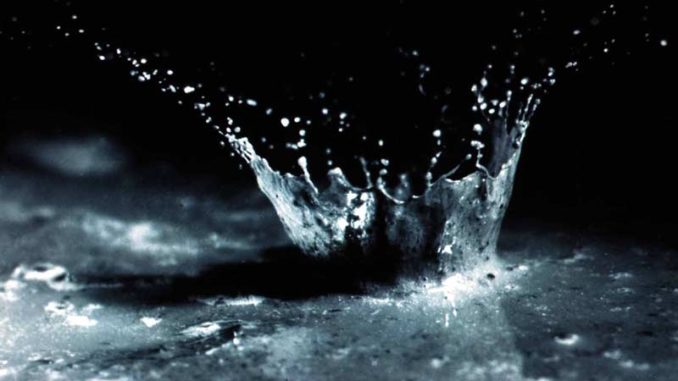
We had a heavy rain here at dusk on Wednesday, followed by a light rain all night long, leaving fog and an overcast sky behind in the morning. The air always smells clean after a good rain, and the weather webpage agrees: the air quality today is reported as Excellent. Beyond the fact that a heavy rain washes pollen and pollutants out of the air, there are other reasons why the air smells clean and wonderful after a rainfall and they are well known. Except that while I knew there were well-known reasons, I also knew that I myself didn’t actually know most of the reasons why this is, so I decided to read up on the subject. And here you are.
There are three separate contributors to clean-smelling air: ozone, geosmin, and plant-secreted oils.
In 1964, Australian scientists Isabel Bear and R.G Thomas were the first to investigate the cause of wonderful-smelling, “wet earth” air. In need of a shorter term for it they invented ‘petrichor’. Naturally, this word is rooted in Greek, a combination of “petros” meaning “stone”, and “ichor” referring to the blood of the Greek gods of mythology. Bear and Thomas found that in dry weather, some plants secrete oils which inhibit the germination of seeds. The oils accumulate in the environment, particularly in the dirt. These oils are then released into the air when it rains. Exactly how that mechanism works will be explained shortly.
Geosmin are spores produced by bacteria, specifically by streptomycetes. There are over 500 species of streptomycetes, and they’re common in soil all over the world. Their spores are also found everywhere: in soil, decaying vegetation, marine ecosystems and sediments. Geosmin smells so good to humans, we often add it to commercially-produced fragrances. It’s also the element that gives beets their earthy flavor, although curiously enough, while everyone likes the smell of geosmin not everyone likes the taste. Certain mineral water may not be palatable, for example, even though it’s perfectly clean and safe to drink. But back to the topic at hand – when it rains, geosmin are released into the air along with the plant-secreted oils. How does that mechanism work?
When raindrops strike earth (which is porous) miniscule bubbles of air are submerged and momentarily trapped underwater. The air bubbles rapidly rise, break the surface membrane of the raindrop, and release aerosols of microscopic particles into the air. Each raindrop can release hundreds of aerosol droplets, and each droplet may contain geosmin and plant-secreted oils. This is the mechanism by which scientists believe petrichor gets out of the wet earth, airborne, and ultimately finds its way to our noses. Winds can carry petrichor long distances – geosmin spores have been found in air samples captured over the ocean.
Third (and last), you’re likely already aware that ozone caused by lightning makes the air smell fresh, especially after a very strong thunderstorm.
Boom. That’s how we get sweet-smelling air.
Question of the Night: What’s the best smell, aroma, or fragrance?
